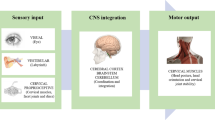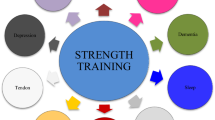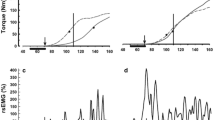Abstract
We evaluated the differences in pinch strength between the thumb and each of the fingers in the dominant and nondominant hands. The subjects were 30 healthy young adult males (mean age 18.5 ± 2.6 years, mean height 174.2 ± 6.5 cm, mean weight 68.0 ± 7.9 kg) with right hand dominance. For each subject, the pinch strength between two fingers (the thumb and each of the other fingers) in the dominant and nondominant hands was measured. Significant differences between pinch strength in the dominant and nondominant hands were found for the thumb–index finger and thumb–middle finger, with the dominant hand having 18 % greater strength. The pinch strength between the thumb and each of the other fingers was ranked in the order of index finger, middle finger, ring finger, and little finger. All correlations were significant, but values for the middle and ring fingers (r = 0.95 and 0.89) were significantly larger. In conclusion, the pinch strength of the fingers most frequently used in daily life is markedly different between the dominant and nondominant hands, but their relationship is low.

Similar content being viewed by others
References
Geschwind N, Behan P (1982) Left-handedness: association with immune disease, migraine, and developmental learning disorder. Proc Natl Acad Sci USA 79:5097–5100
Dolcos F, Rice HJ, Cabeza R (2002) Hemispheric asymmetry and aging: right hemisphere decline or asymmetry reduction. Neurosci Biobehav Rev 26:819–825
Roy EA, Bryden P, Cavill S (2003) Hand differences in pegboard performance through development. Brain Cogn 53:315–317
Touwen BCL (1972) Laterality and dominance. Dev Med Child Neurol 14:747–755
Oda S (1988) The right and left in exercise. Kyoto University, Kyoto, pp 26–28
Chi JG, Dooling EC, Gilles FH (1977) Left–right asymmetry of the temporal speech areas of human fetus. Arch Neurol 34:346–348
Yamamoto T (2001) Measurement and assessment for practical and scientific conditioning. Book House, Tokyo, pp 26–28
Oldfield RC (1971) The assessment and analysis of handedness: the Edinburgh Inventory. Neuropsychologia 9:97–113
Mathiowitz V, Weber K, Volland G, Kashman N (1984) Reliability and validity of grip and pinch strength evaluations. J Hand Surg 9:222–226
Crosby CA, Wehbe MA, Mawr B (1994) Hand strength: normative values. J Hand Surg 19:665–670
Chapman LJ, Chapman JP (1987) The measurement of handedness. Brain Cogn 6:175–183
Miura A (1986) Right-left hands and forearms strength differences for tennis player. Jpn J Phys Fitness Sports Med 15:424–428
Itaya SK, Van Hoesen GW, Barnes CL (1986) Anterograde transsynaptic transport of WGA-HRP in the limbic system of rat and monkey. Brain Res 29:397–402
Vinoth K, Ranganathan M, Vlodek S et al (2001) Skilled finger movement exercise improves hand function. J Gerontol A Biol Sci Med Sci 56:518–522
Conflict of interest
The authors declare that they have no conflict of interest relating to the publication of this manuscript.
Author information
Authors and Affiliations
Corresponding author
Rights and permissions
About this article
Cite this article
Kawabata, H., Demura, S. & Kitabayashi, T. Superior pinch strength in the dominant versus nondominant hand. Sport Sci Health 9, 7–11 (2013). https://doi.org/10.1007/s11332-013-0138-9
Received:
Accepted:
Published:
Issue Date:
DOI: https://doi.org/10.1007/s11332-013-0138-9




